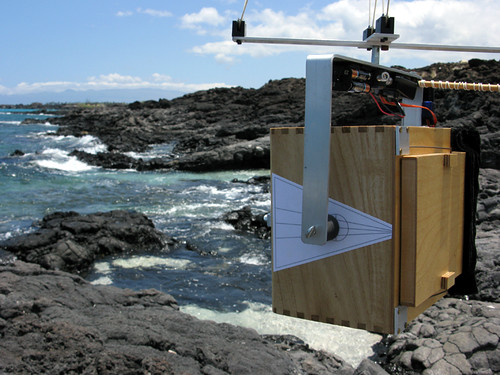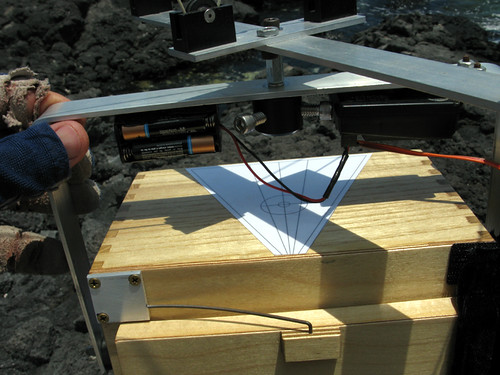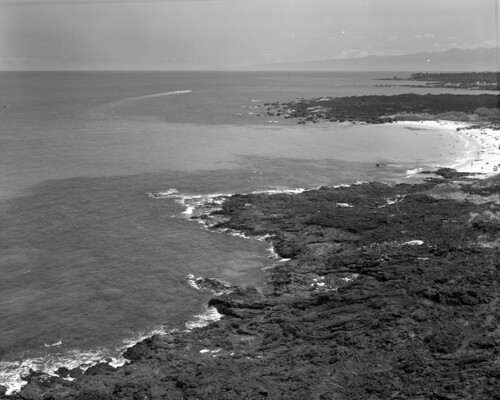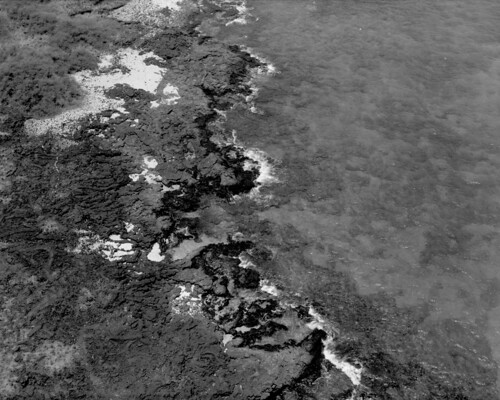- Test the lens against a USAF resolution target: Done. f/16-f/22 is the sweet spot.
- Chrono the shutter: Done. I'm a full stop off at every setting. Lens needs a CLA.
- Replace eyebolts in the Picavet with pulleys: Done. I need to modify the pulley blocks, but the new Picavet works GREAT.
- Replace the Picavet with a Gent-X geometry: Done. But the wide arm is still too wide. Cut down the 12" x 4" cross to a 10" x 4" cross.
- Positive locking on all pivot axes: Mostly done. I don't like the thumb screws on the tilt axis, but they work.
- Add new holes to allow for plan rotation: NOT DONE.
- Light trap for the exposed edge of the film holder: Done. Works like a champ.
The light trap covers the exposed edge of the film holder, and keeps stray light from entering through the dark slide trap. Most of my film holders are ok, but at least one has a slight leak. No biggie on the ground, but in the air where the sun's shining on the back of the camera all day, it's an issue. No more!
The vertical sight guide makes placing the horizon in the shot very straightforward. There are lines for 1/3 points in the frame, as well as a line for the center and outer edges of the frame. In tests it looks like a well-balanced Picavet can hit the horizon to within a few degrees.
The horizontal sight guide works similarly, and lets you place the scene on the frame. There's a second one on the bottom of the camera, so with the kite line tethered you can walk out and double-check the camera is pointing the right way.
For the moment the success of this is a little hit-and-miss. The camera likes to weathervane in the wind, and in my test flights it would tick-tock between pointing where the line wanted to point it (line tension high) to where the wind wanted to blow the kite (line tension low). This is exacerbated by the wind here, which changes compass heading depending on altitude. The kite and the camera rarely want to point in the same direction. I need to fix this with some sort of vane system like a KAPFeather or something similar.
Unfortunately the biggest change of all really can't be seen in a photograph. I changed films. Up until now I've been using Kodak 100TMX, the ISO 100 TMax film. I switched to 400TMY-2, the reformulated ISO 400 TMax film. This bought two stops of light, and the film has almost the same sharpness and resolution as 100TMX. Since I use this camera under Sunny-16 conditions, this meant I got to shoot at 1/250, f/22, right in the lens's sweet spot. The results speak for themselves:
But the results also point out another change I need to make to the camera:
I need a filter holder! A fellow KAPer from France pointed out that I could get a lot more differentiation between the water and the land if I'd put a blue filter in front of the lens. I can't really do that since my B&W filters are all Wratten gels, and the wind would wreak havoc on them. But an internal filter holder for Wratten gels is entirely doable, and wouldn't present any more surface area for the wind.
All in all I'm still very very pleased. My list of things to do isn't empty, but it's a lot shorter. And the new things I'm coming up with are niceties, not show-stoppers. The camera itself is ready for regular use now. Next time I go out to do KAP, it's coming with me.
So what's next? Two new cameras are starting to take shape in the design department. The first is a 35mm spin panorama camera. The second? A medium format multi-shot film camera designed specifically for KAP.
Tom





No comments:
Post a Comment